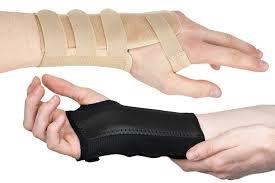The hand and wrist comprises of several small joints, and therefore this area can have several different injury presentations. Most hand and wrist problems arise either due to trauma such as falling on an outstretched hand or a repetitive strain, like typing.
Your GP, Advanced Practitioner or Physiotherapist might have given you a diagnosis already, and directed you here.
Below you will find some of the more common presentations of hand and wrist injuries.
Whether you are undergoing treatment, or waiting to be seen, you might find some helpful resources below to get you started on your journey to improving your hand and wrist pain.
If you would like a more in depth understanding of the anatomy of the hand or wrist, visit AnatomyZone – Your Guide to Human Anatomy and search ‘hand’ or ‘wrist’.

